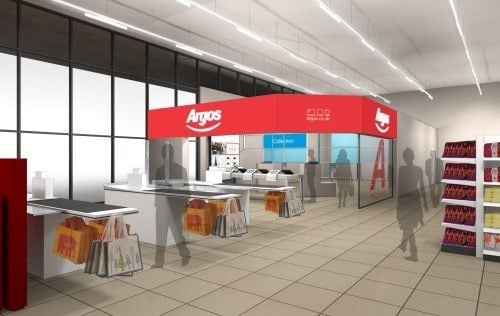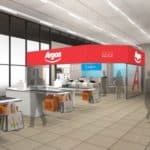The catalogue retailer answered the challenge of cross-channel by radically transforming how it does business, discovers Chloe Rigby
BACK IN OCTOBER 2012, Argos launched a five-year transformation programme that promised to put digital first. The general merchandise retailer set itself the challenge to do no less than “redefine multichannel convenience for a digital age”. A year after it introduced its plan, in October 2013, it reported that mobile commerce had doubled, to 16% of all sales, while multichannel sales represented 52% of its total sales.
Fast forward to Christmas 2014, and an Argos third quarter trading statement, issued in early January, showed mobile accounted for 71% of online visits, 61% of digital sales and 28% of total Argos sales. Some 49% of all its sales took place online in the 18 weeks to 3 January, up from 46% at the same time last year. The mobile commerce figures represented 40% growth, year-on-year.
Mobile commerce, says Vikki Kirby , group communications manager at Argos’ parent company the Home Retail Group, “has grown tremendously in the past few years”. She adds: “We spotted early on that customers would want to shop when out and about, and responded to that.”
Argos offers around 43,000 products through 734 stores, its website and mobile apps. In 2014 its website and apps received about 738m visits, while 123m customers visited its stores.
The fact that Argos leads the way in the IRUK 500 Mobile and Cross-channel Dimension, ranking highly for both mobile commerce and click and collect, is also a recognition of the retailer’s distinct approach to digital, which came out of its background as a catalogue retailer with high street stores. “It is true that our unique retail model has helped us to build on our strengths of innovation in check and reserve, high street presence and single view of stock,” says Kirby.
This Christmas, some 80% of all internet sales were through the Check and Reserve app, first introduced in 2010 and still Argos shoppers’ favourite way to buy across channels.
Argos has answered the task it set itself – of redefining multichannel convenience – by challenging preconceptions about the way that joined-up retail works. Some may have read the last rites over high street stores, but while Argos has pruned its estate in recent years, it also very firmly sees its stores as a strategic advantage.
In its 2012 business review, it said nearly 90% of its sales involved a store at some point. The retailer is currently investing in digital format stores that promise fast click and collect, supported by a hub-and-spoke logistics model that ensures customers can choose from a wide range of products for fast delivery and collection.
See the feature on the six KPIs of mobile apps for more information
NEW PARTNERSHIPS
Argos has also developed partnerships with retailers that it might more traditionally have seen as rivals. eBay buyers can collect their parcels from Argos stores on high streets across the UK, while Argos itself is opening branches of its new-look Argos digital stores in branches of Sainsbury’s. This is perhaps a counterintuitive approach, but one that’s best understood through customer-first thinking. Kirby says: “We can’t comment on the strategies of other retailers but, for Argos, we have partnered where we have identified a mutual benefit in bringing extra choice, accessibility and convenience to customers. The introduction of 10 Argos digital concessions within Sainsbury’s stores will provide customers greater access to an Argos store locally and a choice of over 20,000 non-grocery products, which they can either buy instantly in-store via tablets, or reserve online for easy collection within hours. With eBay, we have successfully enabled a click and collect option for their customers, which has already resulted in over one million pick-ups in Argos stores.”
Argos has innovated in its approach to selling on the London Underground, where it has opened not just a collection point, as many others have, but a smaller, 650sq ft stockless digital store at Cannon Street tube station. Shoppers can both order through screens and pick up purchases they may have made over any channels. The emphasis is on making shopping easy and convenient.
Argos is moving fast. Its Cannon Street store and its partnership with Sainsbury’s have been unveiled in only the last three months. If its current pace of development continues, what can we expect over coming months and years?
“We believe that customers will increasingly expect to be able to shop whenever, wherever they want and will expect retailers to make that easy for them,” says Kirby. “Our fi ve-year transformation plan is in response to this trend. 80% of the UK population is already purchasing goods via digital channels, and nearly 20% have purchased via tablet or smartphone devices. In the next few years, we believe total participation will move towards 100% while mobile devices will become the preferred channels for digital transactions. We have said that we expect 75% of Argos sales to be digitally-led by 2018.”
On this evidence, the future at Argos, it would seem, is definitely mobile.
Click here for a free subscription to Top500 publications, including the current issue in pdf and future reports in print, or .






